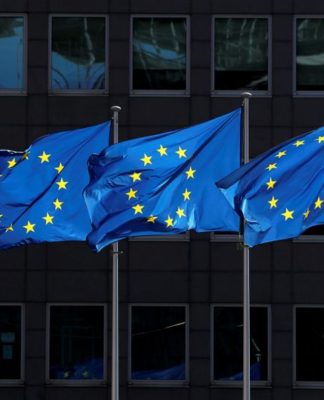Investors cash in on food commodities as the poor go hungry
As food prices rose and war broke out in Ukraine, investors looking for a sure bet flocked into food commodities. The trend could be pushing prices up even further, with live-or-die consequences for the world’s poor.
Rising consumer prices are aggravating food shortages around the globe, and investors looking to make a buck off food commodities could be making matters worse.
Food prices have risen sharply after the coronavirus pandemic disrupted global supply chains, causing shortages around the world. The price of food spiked even higher following Russia’s invasion of Ukraine. Both countries are major global suppliers of agricultural commodities, like wheat and sunflower oil.
“In Uganda, wheat and fuel prices have skyrocketed, making everyday goods like bread almost unaffordable to an ordinary citizen,” Anna Slattery, external affairs manager at The Hunger Project, a nonprofit that works to end world hunger, told DW.
“In Malawi, our teams are reporting that the prices of maize grain, soybeans and cooking oil have increased significantly, over 50% in some places. The increase in prices is making it difficult for people to access these vital food items.”
An appetite for commodities
Investors trying to make money off the high demand for food and other commodities could be putting even more pressure on prices.
After the war broke out in February, commodity-linked “exchange-traded funds (ETFs),” a type of investment fund open to the public, saw a huge uptick in activity: By April, investors had pumped $1.2 billion (€1.12 billion) into two major agricultural ETFs, compared to just $197 million for the whole of 2021, Lighthouse Reports, an investigative journalism NGO, found out.
According to the news website The Wire, the Paris milling wheat market, the benchmark for Europe, has also seen a significant increase in the share of speculators — that is, investors whose primary aim is to turn a profit — buying up its wheat futures contracts. That’s in place of commercial traders or hedgers, i.e. market players who have an interest in buying the commodity itself, for example to secure a wheat supply for a bread factory.
Activity at the Chicago Board of Trade, one of the world’s leading futures exchanges, also reflects this trend. A recent study by the Center for Development Research (ZEF) at the University of Bonn found that the share of speculators in hard wheat and maize had risen with the price of the commodities, and that it had gone up sharply since the end of 2020. The researchers also found that the volatility of futures prices had increased significantly since the end of 2021, a sign of market irregularities that can lead to excessive speculation.
A sure bet
The ZEF report warned that more speculation could see prices decoupling from fundamentals, like supply and demand for example. It pointed to similar trends leading up to the global food crisis that emerged in 2008.
In April, analysts at investment bank JPMorgan Chase suggested that commodities prices could surge as much as 40% as traders pile in, creating an attractive return for investors.
Traders tend to move away from riskier investments, like tech stocks and cryptocurrencies, in times of economic uncertainty, favoring safer bets, like food and other hard commodities, like oil and fertilizer. Food commodities, like wheat, corn and rice, can also be adversely affected by market uncertainty.
“The more uncertainty in the market, the more demand for risk trading exists,” Lukas Kornher, economist and ZEF project manager, told DW. “That is why we see the influx of speculative traders in the market.”
Excessive trading
“[Speculative traders] basically try to jump on a bandwagon of increasing prices,” said Kornher. “And then they start trading with each other instead of meeting the hedging demand of commercial producers or traders.”
The price of the commodity can then become disconnected from its physical supply and demand.
Excessive speculative activity in commodities markets is “a double-edged sword,” Dirk Bathe, press officer at World Vision Germany, a humanitarian aid group, said.
“On the one hand, speculation on scarce commodities can lead to drastically rising prices,” he told DW. “On the other hand, this market functions like an early warning system,” giving businesses and policymakers time to react.
Millions more pushed into poverty
The current price inflation and record-high prices at the commodities futures markets signal an expected scarcity within a couple of months, according to Kornher, who said the world was likely “on its way” to a food crisis.
The Food and Agriculture Organization (FAO)’s food price index was up 36% in April compared with the same month a year before, after hitting an all-time high in March. The World Bank’s Agricultural Price Index also hit an all-time nominal high in the first quarter of the year, up 25% over a year ago. According to a World Bank analysis, for every one percentage point increase in food prices, 10 million more people are pushed into extreme poverty.
Experts have called for measures to protect food systems against speculation. Banks and investment funds could abstain from food speculation as part of their environmental, social and governance (ESG) policy, for example. They’ve also warned against countries responding to high food prices by turning to protectionist policies.
“We need to make sure that countries don’t take export restrictions, don’t take export bans that will only exacerbate the food insecurity we’re seeing today,” Arancha Gonzalez, trade expert and the former foreign minister of Spain, told DW. “This is what we learned in 2008.”































